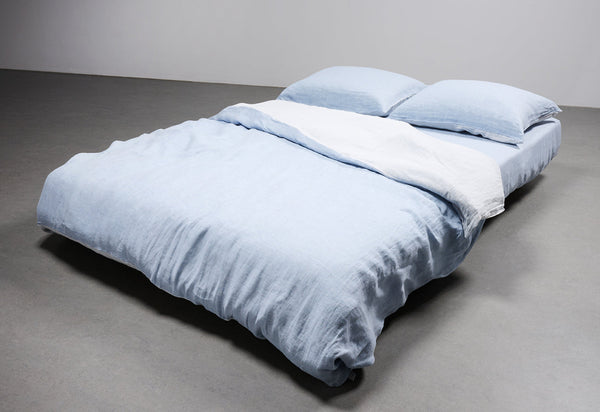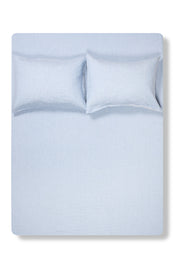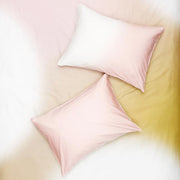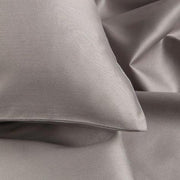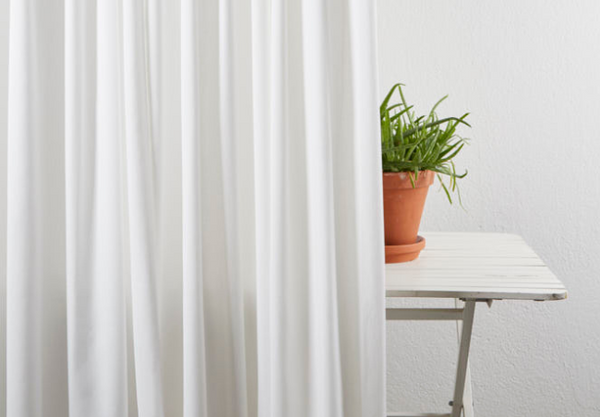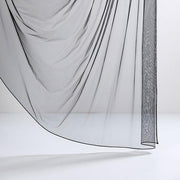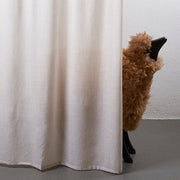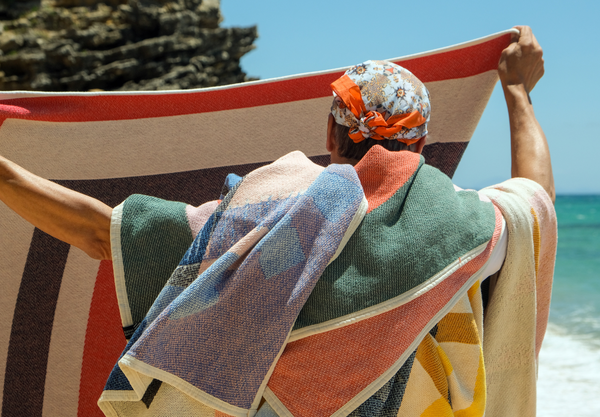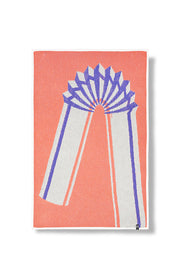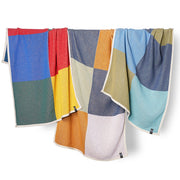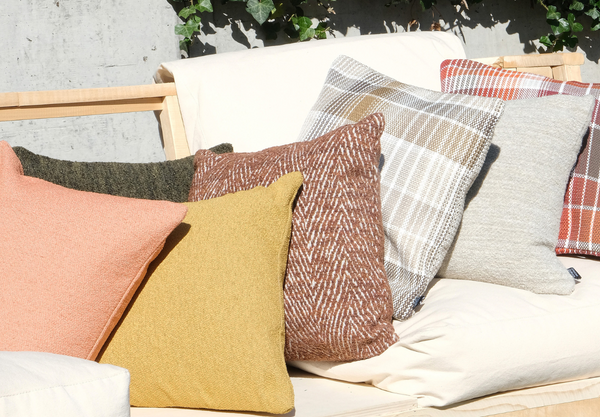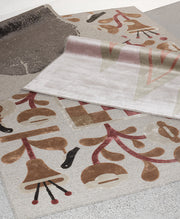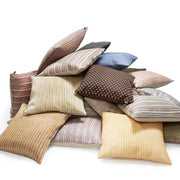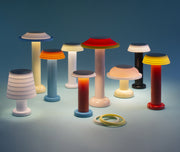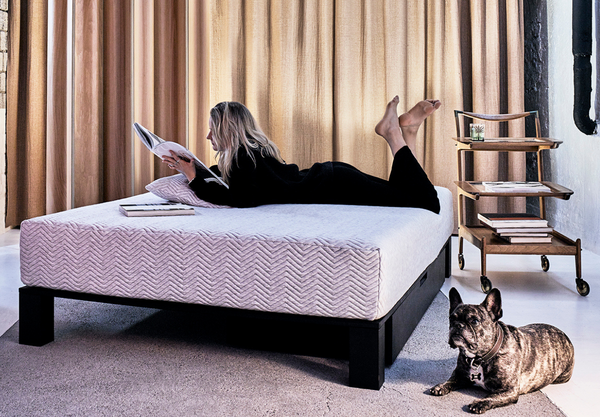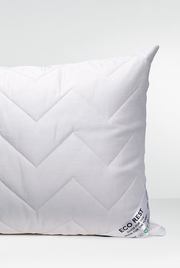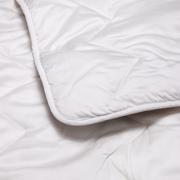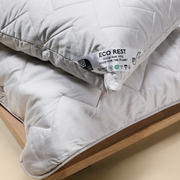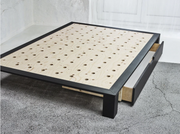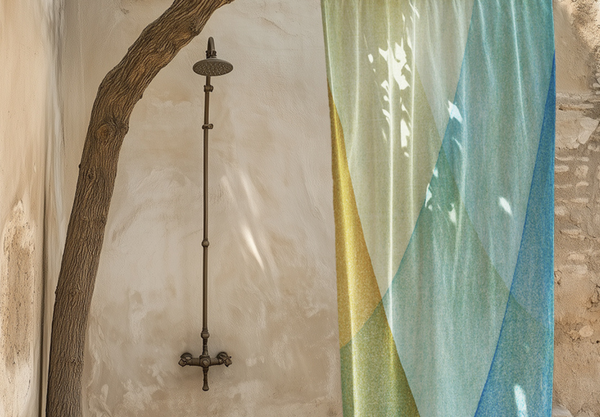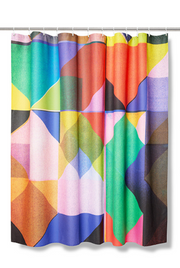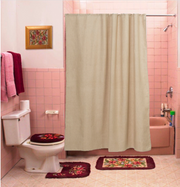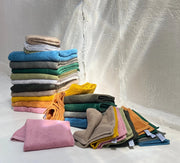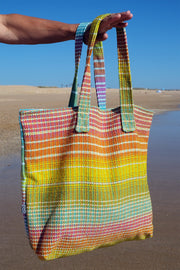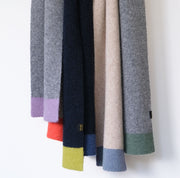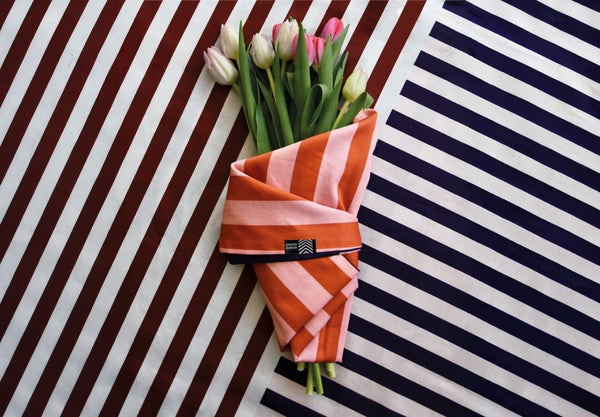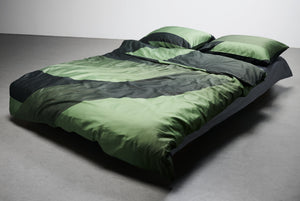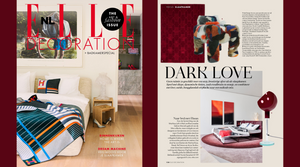Wool blankets come in all kinds. Some are thick and heavy, made to keep you warm through freezing nights. Others are light and breathable, so you can use them anytime. The feel matters too, whether you want something soft and cozy or with a bit more texture. Picking the right one comes down to knowing what matters most to you and your home.
Before choosing one, it helps to understand what a wool blanket is.
What Is a Wool Blanket?
A wool blanket is a type of blanket made from natural fibers taken from animals like sheep, alpacas, or goats. These fibers have a natural wave that helps them trap warmth while still letting air move through, keeping you comfortable in both cold and mild weather. The weave, weight, and finishing process all affect whether a wool blanket feels soft and smooth or more textured and sturdy.
Beyond warmth, wool blankets are valued for their durability and low-maintenance care. They keep their shape, resist wrinkles, and handle years of regular use when properly looked after. To pick the best match for your needs, you need to know the types of wool blankets.
What Types of Wool Blankets Are There?
Each wool blanket type has its own strengths. Some are made for warmth in winter, while others work best as light layers you can use at any time of the year.
Let’s look at the 4 most common options so you can spot the right one at a glance:
1. Standard Sheep’s Wool
This is the classic wool most people picture in a blanket. It’s durable, holds warmth well, and works best in colder weather or for outdoor use. The texture changes depending on the breed of sheep, ranging from soft to more textured. With the right care, a blanket made from standard sheep’s wool can last for many years of regular use.
2. Merino Wool

Merino wool comes from Merino sheep and is known for its fine, soft fibers. It feels gentle against the skin, making it more comfortable than standard wool for direct contact. It’s also highly breathable, so it works well in both warm and cool conditions. A Merino wool blanket offers everyday comfort with a touch of luxury that suits bedrooms and living spaces alike.
3. Cashmere
Cashmere comes from the soft undercoat of cashmere goats. It’s exceptionally soft, fine, and light, yet it provides warmth without being bulky. The fibers have a smooth, almost silky touch that sets them apart from other wools, making a cashmere blanket feel instantly luxurious every time you use it.
4. Alpaca Wool
Alpaca wool is known for being warmer than sheep’s wool while still feeling light in the hand. It has a smooth, silky texture and stays comfortable in different seasons. Since it contains no lanolin, it’s a comfortable choice for people with wool sensitivities. The smooth texture and gentle warmth make an alpaca wool blanket a cozy layer for year-round use.
The Benefits of a Wool Blanket
A wool blanket offers more than warmth on a cold night. Its natural qualities work in ways that make your home and sleep more comfortable. From helping your body stay at the right temperature to resisting wear and odors, here are several benefits of wool blankets to know before you buy:
1. Temperature Regulation: Wool is an active fiber that reacts to changes in your body temperature. It breathes, releasing heat when you’re too warm and trapping it when you’re cold.
2. Moisture Wicking: Wool can absorb up to 30% of its own weight in moisture without feeling damp. It pulls sweat away from your skin and releases it into the air, keeping you dry and comfortable.
3. Naturally Resilient: Wool fibers can bend and recover their shape over and over again. This helps the blanket resist wrinkles and keep its form for years.
4. Hypoallergenic Properties: Wool is naturally resistant to dust mites, mold, and mildew. For those with sensitive skin, Alpaca wool is a great option as it contains no lanolin, reducing the chance of wool allergy.
5. Odor-resistant: Wool limits bacteria growth that causes bad smells, making sure your blanket stays fresher between washes.
How to Pick the Right Wool Blanket for You
The best wool blanket for you depends on how you’ll use it, how it should feel, and how much care you’re willing to give. This simple guide will help you focus on what matters most:
1. Define Its Purpose
First, think about how you will use it. A bed blanket in a cold climate should be larger and warmer, while in a warmer climate, a lighter and more breathable weave works better.
For a decorative wool throw blanket, you can choose something smaller and lighter, while a camping blanket needs durability. If it’s for evenings on the couch, go for softness and comfort you’ll want to wrap around yourself.
2. Understand Warmth and Weight
The warmth of a wool blanket often relates to its weight, which is sometimes measured in grams per square meter (GSM). A higher GSM usually means a denser blanket that insulates better, while a lower GSM gives you something lighter and more breathable.
For a cozy winter layer, choose a heavier weight that traps heat well. If you want a blanket you can use in different seasons, a lighter weight will keep you comfortable without overheating.
3. Prioritize Softness
If you’ve ever felt a scratchy sweater made of wool, you know why softness matters. It comes down to the diameter of the wool fiber, measured in microns. A lower micron number means a finer, softer fiber. Standard wool often has a higher micron count, while Merino wool is known for its very low micron count, giving you a blanket that feels soft and gentle against the skin.
4. Consider the Weave
The weave of a wool blanket can change how it feels, hangs, and holds up over time. A twill weave gives you a classic diagonal pattern with a smooth drape. A plain weave is simple, sturdy, and built to last. A jacquard weave weaves patterns directly into the fabric, creating designs that turn the blanket into a statement piece.
5. Plan for Care
Check the care label before you buy. Many high-quality wool blankets are dry-clean only to protect the fibers, while some are best hand-washed in cold water. Follow the recommended care to keep the blanket looking and feeling its best for years.
Is Merino Wool the Best Wool Blanket?
Depending on your preferences, Merino wool might be the best choice for its mix of softness, year-round comfort, and refined appearance. The fine fibers bend easily against the skin, so they avoid the itch that coarser wools can cause.
Merino also regulates temperature exceptionally well, providing warmth in winter and staying breathable in warmer months. Its fine fibers allow for a smooth drape and make colors and patterns stand out with clarity, giving you a blanket that feels as good as it looks. For even more warmth, Alpaca is an excellent option, while Cashmere offers unmatched softness and a luxurious feel.
Ready to Wrap Yourself in the Perfect Wool Blanket?
A wool blanket should feel comfortable in every season, rest softly against your skin, and bring something special to your space. ZigZagZurich’s collection is made from fine New Zealand and Italian Merino wool, offering a natural balance of warmth, breathability, and lasting quality. Each piece is woven in collaboration with artists and designers, creating patterns that are both distinctive and timeless.
With every blanket made in our own facilities, we ensure the care, detail, and integrity that define our work. Our collection is available to explore when the time feels right for your home.
Frequently Asked Questions
Navigating the options can bring up a few questions. Here are some of the most common ones we hear.
1. Will a wool blanket shrink?
Wool can shrink if exposed to high heat and agitation. That’s why it’s critical to follow the wool blanket care instructions. Washing in cold water or dry cleaning, as recommended, will prevent shrinkage and keep your blanket in perfect condition.
2. Are wool blankets worth the investment?
A well-made wool blanket is a long-term purchase. Unlike synthetic throws that can pill and lose their shape after a few washes, a wool blanket will last for decades with proper care. Its durability, timeless appeal, and natural performance benefits make it a worthwhile addition to any home.
3. How do I know if a blanket is ethically made?
An ethically made blanket comes from a brand that is open about where its materials come from and how it is produced. At ZigZagZurich, we manage our own manufacturing from start to finish, giving us full oversight of sourcing, production, and working conditions. This approach ensures every blanket meets our standards for quality, responsible practices, and environmental care.
4. Are Wool Blankets Itchy?
Not all wool blankets are itchy, and in many cases, they feel soft and inviting. Softer types, such as Merino or Alpaca, are usually smooth and comfortable against the skin. When you care for them regularly with gentle washing, air drying, and proper storage, they stay soft over time and remain a pleasure to use.
